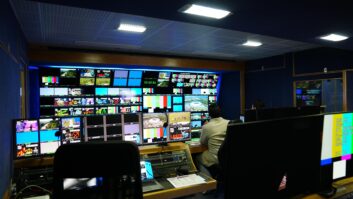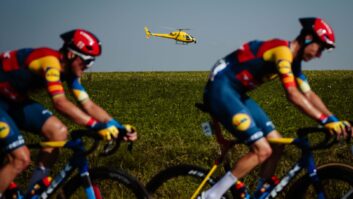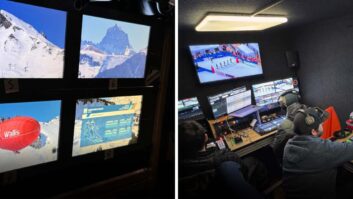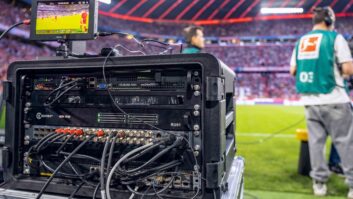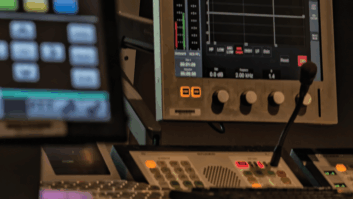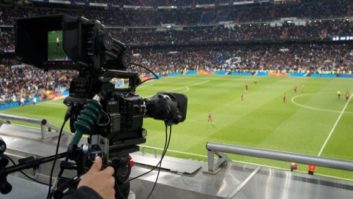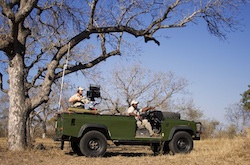
Adrian Pennington reports on a unique attempt to broadcast a safari, live, in stereo 3D – and over the internet – from South Africa.
Daily live 3D broadcasts from on safari are underway featuring a unique set of production technologies. The content is being distributed via the internet and being offered as the WildEarth 3D channel to IPTV platforms.
Viewers are treated to live safaris from Djuma in the Sabi Sands game reserve, part of the Kruger National Park, in the company of a single presenter/expert ranger from the back of a Land Rover. 2D transmissions have been broadcast since 2007 but on August 15 the feed went live in stereo 3D.
“We are providing an immersive experience in nature,” explains Graham Wallington CEO and co-founder of WildEarth.TV. “Unlike National Geographic, Animal Planet or other wildlife related broadcasters who are in the business of creating documentaries, our focus is on faithfully recreating a real life experience in nature.”
“We are creating a sense of telepresence by transmitting live and giving people the feeling of what it is like to be on safari. There is no scripted narrative, no staged events or cutaways to recorded footage of lion kills. This is safari as it happens.”
The introduction of 3D stereo promises to enhance the simulation of actual experience even further.
“There are several things about the way we film already which lends itself to 3D,” explains Wallington. “We always shoot with one camera POV, partly because there is no room for more than one camera-op. We shoot from the viewpoint of guests sitting on a game drive vehicle looking forward over the presenter’s shoulder with the front of the Land Rover then the road ahead in view with bush left and right.
“This gives a natural sense of perspective with foreground and background and the shot is always moving forward. Even if nothing is happening in terms of wildlife, the shot is always of interest.”
This straightforward immersive experience, which features limited cutting between camera angles, attracts more than half of viewers to the 2D transmissions to watch an entire three hour safari in one sitting, he claims.
“With this type of content there’s no need to follow a storyline, you can enter or leave at any point. No cutting allows for a more immersive experience and longer viewing sessions. Viewers don’t feel the urge to channel hop if they’re not getting excited, because they feel like they are here with us. It’s a very relaxing sensation.”
Wallington previously set up AfriCam in 1998 which deployed webcams on various wildlife spectacles around the world to transmit live internet feeds of wildlife.
He adds, “We are not in the business of TV production but the business of letting people escape their daily lives to other parts of the world.”
Viewers can interact by sending emails, chatting or Tweeting questions to the director who can choose to follow them up by asking the presenter to respond or by altering the direction of the camera.
For acquisition the challenge was to deliver a 3D image taking in a large focal range from the presenter in the foreground 1.2 metres away with animal subjects typically up to 25m further.
A second issue was trying to calculate stereo convergence automatically for an unbroken live POV shot lasting three hours. The equipment also needed to survive dust, cold, rain and the vibrations of a 4-wheel drive vehicle where there would be no time to stop and repair damage.
Wallington turned to Johannesburg-based 3D specialists 3D Rigs to devise a solution using miniature cameras that would better withstand the rigours of daily safari.
“For most 3D productions you would use an operator to pull the convergence while shooting but it is not feasible in this case because of the space on the vehicle and the unrehearsed nature of what we are filming,” explains Russ Bowden, 3D Rigs owner and chief designer. “As the camera’s focus or zoom is adjusted we needed software which would calculate the correct interaxial and convergence parameters of the lenses and then move them in real time.”
Two Sony HD block cameras have been fitted to a customised 3D Rigs’ Pro Ultra mirror rig which is described as a ‘working prototype’. The block cameras have a built in zoom lens ranging 5.1mm to 55mm, or up to 600mm with a digital zoom applied.
“These block cameras were the only ones we could find that our programmers could write new software for that would open control of the camera and lens,” says Bowden. “The biggest challenge was achieving control over lenses for close up work. We may want to shoot a dung beetle on a 600mm focal length from three metres away.”
“We believe this is the only rig on the market which is computer controlled in this way,” he claims.
Audio is taken from stereo mics positioned either side of the cameraman which, when a viewer wears headphones, is intended to replicate the directional sound you would hear from the vehicle. “This isn’t 5.1 surround which simulates 3D audio – this is 3D audio,” says Wallington.
Christmas party
Night shoots will also be tried using Infra-Red photography, something that he freely admits could be a disaster.
“We don’t know what it will look like, and we’re not going to schedule it, but drop it into the broadcast as an experiment,” he says. “We’ll use two LED Infra Red panels on either side of the cameras in order to create as flat a light as possible, with no key light. It could be amazing or shockingly bad. But imagine in complete darkness the viewer could enter into a herd of grazing elephant with all the sounds of the African night. It could be a startling experience.”
Distribution is equally innovative. The dual feeds are separately encoded left and right eye into H.264 1080i, multiplexed together and sent by microwave link from the vehicle to a reception tower in the centre of the park then by fibreoptic cable to WildEarth’s final control gallery in Djuma. There the signal is decoded back to two 1080i feeds and routed side by side into a single 1920 x 1080 HD frame at 25fps.
This signal is ingested into a Content Delivery Network (CDN) and sent as H.264 video over IP to the WildEarth cloud-based Master Control where the feed is archived and played out at 6Mbps to IPTV operators around the world.
“The idea is to feature six hours of live content every day with reruns of those safari’s throughout the rest of the schedule. The goal is to have 24 hours a day of live content,” he says.
“The cost of delivery via an IP network is far cheaper than delivery by satellite,” he continues. “It permits small companies like ourselves to gain a global coverage whereas previously this would have been prohibitively expensive. It’s just as cost-effective for us to deliver to Buenos Aires as Paris. That gives us a strong competitive advantage and a substantial flexibility over distribution. We see ourselves as an internet production company coming into traditional TV rather than traditional TV trying to enter the internet.
“We are tiny compared to the traditional behemoth production companies but we are able to bring a live channel to market for the amount they would spend on a Christmas party.”
The WildEarth 3D feed will also be streamed live to its own website (www.wildearth.tv). Achieving that meant building a bespoke 3D video player. Although YouTube has a thriving 3D area, with content including WildEarth’s available to view in up to sixteen formats (green/magenta, parallel, row interleave, mirror split etc), Google’s player is not commercially available.
WildEarth’s 3D player will allow viewers to choose how they wish to view including analgyph red/cyan and amber/blue. Internet channel LiveStation.com will also stream a 1Mbps version of the 3D channel.
There’s even an iPhone app launching next month which, with the aid of Zeiss Cinemizer specs, will allow the user to watch a side by side (frame compliant) stereo version.
“Viewers can put the glasses on when on a train riding to work and be plugged straight into a safari … live,” suggests Wallington.

